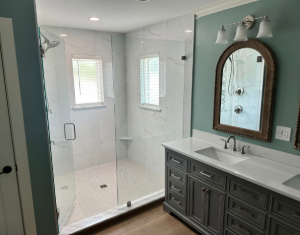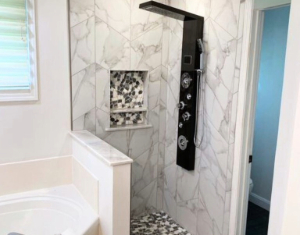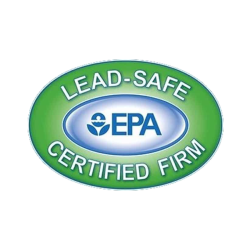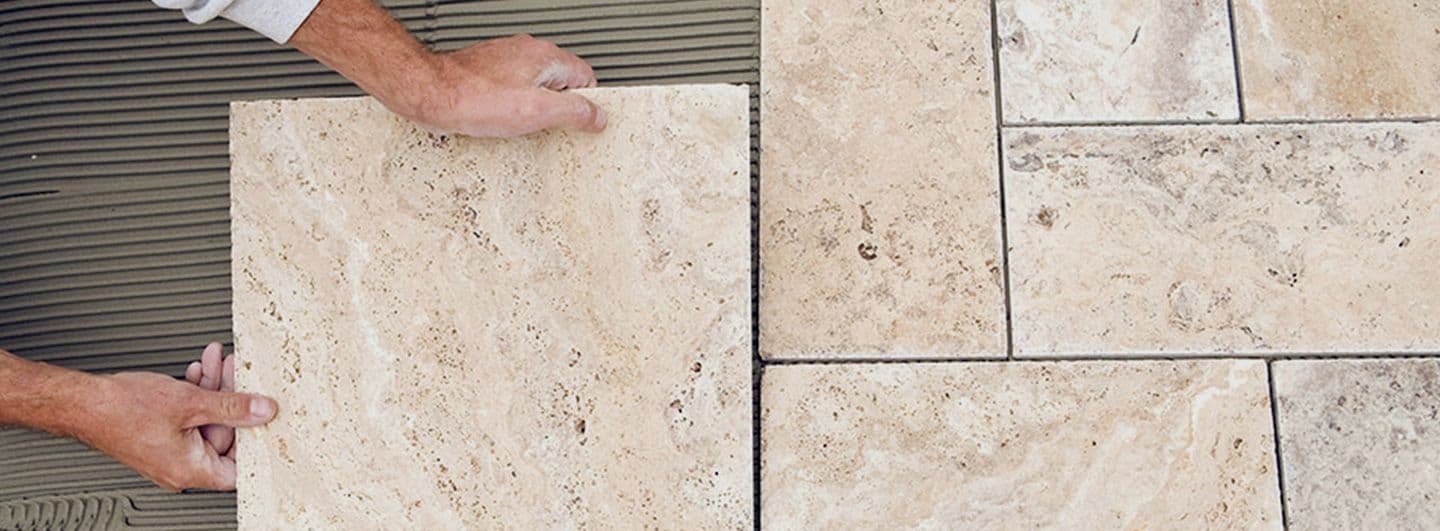Is there a way to ensure that you will get a quality tile floor installation? Absolutely! We’ve gone over 9 tips to make sure that you hire a quality tile installer. And of course, if you’re looking for a certified, quality tile installer for your new backsplash, give us a call.
A Quality Tile Floor Installation Will be Performed by a Certified Tile Installer
1. Certified Tile Installers use the correct methods and materials for installing tile.
There are only two ways to install tile: the right way, and the wrong way. A CTI won’t cut any corners, because they know a shortcut now will result in damaged materials later.
2. A quality tile floor installation depends on premium bonding materials.
Cheap materials like grout and backer boards saves a few dollars today, short term. But cheap materials cost far more when they crack, allow mold growth, or other damage that requires repair or replacement far too soon.
“Quality is never an accident; it is always the result of high intention, sincere effort, intelligent direction and skillful execution; it represents the wise choice of many alternatives.” ~William A. Foster

William A Foster, Medal of Honor recipient and oft quoted
“Quality is never an accident; it is always the result of high intention, sincere effort, intelligent direction and skillful execution; it represents the wise choice of many alternatives.” ~William A. Foster

William A Foster, Medal of Honor recipient and oft quoted
3. A quality tile installation requires careful, controlled jobsite conditions, and a lot of preparation.
Temperature and humidity must be maintained at optimum levels throughout a tile project. A certified tile installer will always use eye protection, and gloves. Materials will be neat and orderly and, most of all, complete. Careful planning and preparation prevents poor performance. Without all of the work that goes into the project before setting the first tile, the job moves much slower than it has to. Or it get worse. The conditions for mistakes are created, the installer takes multiple trips to the materials supplier, and the job takes twice as long as scheduled. Dangers to contractors in your home impact homeowners. If someone gets hurt and a claim is made against your insurance, there goes the budget for your new bathroom, and the tile never gets installed. It is critical to make sure you know your contractor well, and that they have all of the proper certifications and insurance before you start the project.
“Working safely may get old, but so do those who practice it.” – Author unknown
4. A quality tile installer ensures that they are setting tile on a flat surface.
You and I both know this obvious step in tile installation, but homeowners sometimes do their out of work nephew a favor, and let them tile their new bathroom. The nephew never levels the subfloor, and the tile looks like the rolling hills of Appalachia until they crack and come loose in no time. Tile is flat. The surface it goes on must be perfectly flat. Be sure to hire a professional, certified contractor who understands this.
5. A certified tile installer ensures that the installation surface is rigid.
Most tile is fairly solid, but not rigid enough to prevent cracks if the surface it’s installed on can flex too much. An ounce of prevention is worth a pound of cure, especially when dealing with tile. All subfloor plywood must be fastened snug and must not bend or flex for a quality tile installation.
6. A quality tile installer uses crack isolation membrane when necessary.
You’d think a concrete floor would offer the best foundation for tile, and it would, if concrete didn’t shift and crack. A crack isolation membrane creates a buffer between the tile and installation surface, so when the concrete shifts, the tile remains whole and in place.

7. A certified tile installer understands minimum mortar coverage.
Minimum mortar coverage is the contact area of the bonding material with both the tile and the surface being tiled. The standard of 80% in dry areas and 95% in wet (showers) or exterior areas prevents cracked tile. Natural stone tile installations require 95% coverage in all applications. A quality tile installation is only possible with this knowledge, and practice.
8. A quality tile installation uses movement accommodation joints for temperature and humidity variations.
The Tile Council of North America’s standards recommend these joints for expansion and contraction in every room. In small rooms, a gap at the perimeter of the room (hidden by baseboard or shoe molding) is sufficient. For larger areas, movement joints are needed to allow expansion and contraction without cracking the tile.
9. A certified tile installer plans for adequate curing time before the allow the room to be used.
In the art of tile installation, time is the most important tool of all. CTIs will ensure their work has enough time to set and settle before the room is exposed to traffic, moisture, and use.
If you’d rather sit back and relax knowing your installer will be following all the best practices in the business, Flooring Masters & Professional Remodelers employs certified tile installers who stay on top of the latest industry trends and standards with continuing education and regular evaluations.
Call or email today for a consultation and let us guide your next project.











